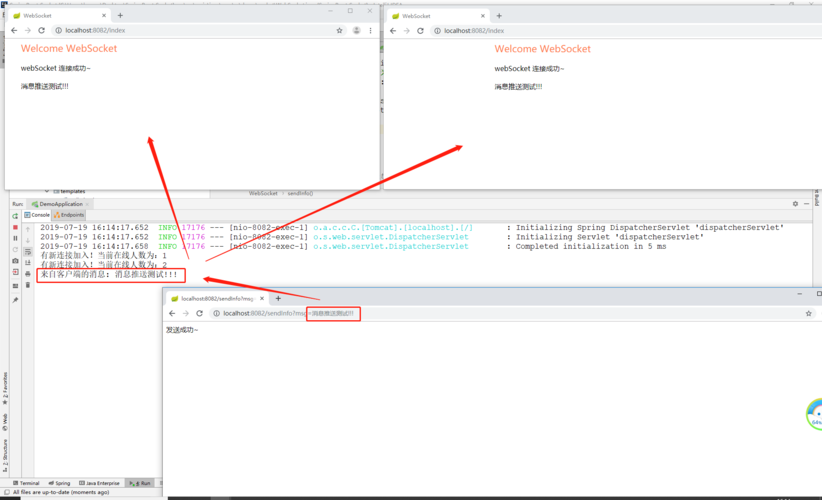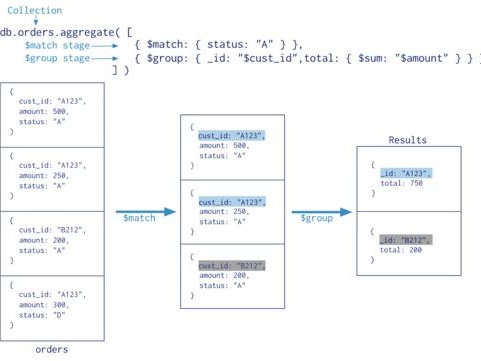本文将详细介绍如何使用Spring Boot集成Netty和Websocket,实现后台向前端推送信息的功能。我们将深入探讨Netty和Websocket的原理,以及如何利用Spring Boot简化Netty的集成和配置。

1. 引言
在当今的互联网应用中,实时通信变得越来越重要。Websocket是一种在单个TCP连接上进行全双工通信的协议,它为客户端和服务器之间的实时数据传输提供了一种高效的解决方案。与传统的HTTP轮询相比,Websocket可以显著减少网络延迟和带宽消耗。
Netty是一个高性能、事件驱动的NIO(非阻塞IO)框架,它基于Java NIO实现了异步和事件驱动的网络应用程序。Netty提供了丰富的网络协议支持,包括HTTP、HTTPS和Websocket等。

Spring Boot是一个基于Spring框架的微服务开发框架,它提供了许多开箱即用的功能和简化配置的机制。在Spring Boot应用程序中,我们可以通过集成Netty和Websocket,实现后台向前端推送信息的功能。
2. Netty和Websocket的原理
2.1 Netty原理
Netty基于Java NIO(非阻塞IO)实现,它采用事件驱动的编程模型,将IO操作抽象为事件,通过事件处理器来处理这些事件。Netty的主要组件包括:
- Bootstrap:用于启动客户端和服务器的引导类
- Channel:代表IO操作的通道,用于网络读写操作
- ChannelHandler:用于处理IO事件的事件处理器
- EventLoopGroup:用于处理IO操作的多线程事件循环组
2.2 Websocket原理
Websocket是一种在单个TCP连接上进行全双工通信的协议,它允许客户端和服务器之间进行实时的双向数据传输。Websocket协议的主要特点包括:
- 握手:客户端和服务器通过HTTP协议进行握手,升级协议为Websocket
- 数据帧:Websocket协议定义了数据帧的格式,用于传输数据
- 控制帧:用于传输控制信息,如关闭连接等
3. Spring Boot集成Netty和Websocket
在Spring Boot应用程序中,我们可以通过集成Netty和Websocket,实现后台向前端推送信息的功能。首先,我们需要添加Netty和Websocket的依赖,然后在Spring Boot应用程序中创建一个NettyWebsocketChannelInitializer类,用于初始化Websocket通道。
3.1 添加依赖
在项目的pom.xml文件中添加Netty和Websocket的依赖:
io.netty netty-all 4.1.63.Final org.springframework.boot spring-boot-starter-websocket3.2 创建NettyWebsocketChannelInitializer类
创建一个名为NettyWebsocketChannelInitializer的类,用于初始化Websocket通道:
import io.netty.channel.ChannelInitializer; import io.netty.channel.ChannelPipeline; import io.netty.channel.socket.SocketChannel; import io.netty.handler.codec.http.HttpObjectAggregator; import io.netty.handler.codec.http.HttpServerCodec; import io.netty.handler.codec.http.websocketx.WebSocketServerProtocolHandler; import io.netty.handler.stream.ChunkedWriteHandler; public class NettyWebsocketChannelInitializer extends ChannelInitializer { @Override protected void initChannel(SocketChannel ch) throws Exception { ChannelPipeline pipeline = ch.pipeline(); // 添加HTTP编解码器 pipeline.addLast(new HttpServerCodec()); // 添加ChunkedWriteHandler,用于处理大数据流 pipeline.addLast(new ChunkedWriteHandler()); // 添加HTTP对象聚合器,将多个消息合并为一个完整的HTTP请求或响应 pipeline.addLast(new HttpObjectAggregator(65536)); // 添加WebSocket协议处理器 pipeline.addLast(new WebSocketServerProtocolHandler("/ws")); // 添加自定义的WebSocket消息处理器 pipeline.addLast(new NettyWebsocketHandler()); } }3.3 创建NettyWebsocketHandler类
创建一个名为NettyWebsocketHandler的类,用于处理Websocket消息:
import io.netty.channel.ChannelHandlerContext; import io.netty.channel.SimpleChannelInboundHandler; import io.netty.handler.codec.http.websocketx.TextWebSocketFrame; import io.netty.handler.codec.http.websocketx.WebSocketFrame; public class NettyWebsocketHandler extends SimpleChannelInboundHandler { @Override protected void channelRead0(ChannelHandlerContext ctx, TextWebSocketFrame msg) throws Exception { // 接收到客户端发送的WebSocket消息,可以在这里进行处理 System.out.println("接收到客户端消息:" + msg.text()); // 向客户端发送消息 ctx.channel().writeAndFlush(new TextWebSocketFrame("服务器响应:" + msg.text())); } @Override public void exceptionCaught(ChannelHandlerContext ctx, Throwable cause) throws Exception { // 异常处理逻辑 cause.printStackTrace(); ctx.close(); } }3.4 创建WebSocketConfig类
创建一个名为WebSocketConfig的类,用于配置WebSocket相关的参数:
import org.springframework.context.annotation.Configuration; import org.springframework.messaging.simp.config.MessageBrokerRegistry; import org.springframework.web.socket.config.annotation.EnableWebSocketMessageBroker; import org.springframework.web.socket.config.annotation.StompEndpointRegistry; import org.springframework.web.socket.config.annotation.WebSocketMessageBrokerConfigurer; @Configuration @EnableWebSocketMessageBroker public class WebSocketConfig implements WebSocketMessageBrokerConfigurer { @Override public void registerStompEndpoints(StompEndpointRegistry registry) { registry.addEndpoint("/ws").withSockJS(); } @Override public void configureMessageBroker(MessageBrokerRegistry registry) { registry.setApplicationDestinationPrefixes("/app"); registry.enableSimpleBroker("/topic"); } }4. 创建消息模型和消息处理器
创建一个名为Message的Java类,用于表示消息模型:
public class Message { private String content; public Message(String content) { this.content = content; } public String getContent() { return content; } public void setContent(String content) { this.content = content; } }创建一个名为MessageController的类,用于实现消息推送功能:
import org.springframework.messaging.handler.annotation.MessageMapping; import org.springframework.messaging.handler.annotation.SendTo; import org.springframework.stereotype.Controller; @Controller public class MessageController { @MessageMapping("/send") @SendTo("/topic/messages") public Message send(Message message) { return new Message("服务器推送消息:" + message.getContent()); } }5. 总结
本文详细介绍了如何使用Spring Boot集成Netty和Websocket,实现后台向前端推送信息的功能。我们首先探讨了Netty和Websocket的原理,然后通过创建NettyWebsocketChannelInitializer类和NettyWebsocketHandler类,实现了Websocket通道的初始化和消息处理。接着,我们通过创建WebSocketConfig类和MessageController类,配置了WebSocket相关的参数,并实现了消息推送功能。









